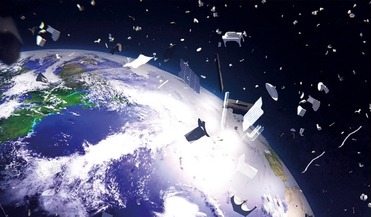 April 2019
The changing economics of space
April 2019
The changing economics of space
... mega-constellations.. The European Space Agency (ESA) estimates there are around 3,200 objects in LEO (low Earth orbit). At the same time a number of companies have announced their intention to deploy large constellations of up to 2,000 satellites...
 April 2019
Building the UK’s first spaceport
April 2019
Building the UK’s first spaceport
... spaceport project. UK government-funded research suggests that more than 30 small satellite operators plan to launch low Earth orbit (LEO) constellations before 2030, amounting to more than 7000 potential satellites. LEO satellites are designed with...
 July 2019
Aggression in outer space – time for action
July 2019
Aggression in outer space – time for action
... satellites. In the same category are the manoeuvres made by Chinese satellites in both low Earth orbit (LEO) and, more recently, in geostationary orbit (GEO), which point to testing of rendezvous operations or inspection objectives. In the United...
 January 2021
Safeguarding space - lessons from decommissioning in the energy industry
January 2021
Safeguarding space - lessons from decommissioning in the energy industry
... be the first commercial mission to demonstrate the core technologies necessary for active debris docking and removal in low Earth orbit. With technology beginning to emerge and the pressing need identified, the big question remains - how can...
 October 2023
The multidisciplinary world of space habitation design
October 2023
The multidisciplinary world of space habitation design
.... Their paper, ‘Archaeology of the International Space Station (ISS)’, investigates the first “mini-society off-world” in low Earth orbit, documenting human adaptation to a new and lasting environment for the past two decades and more. Research...
 May 2024
Beyond Earth’s magnetic field
May 2024
Beyond Earth’s magnetic field
... but constitute a priority in the exploration of outer space by Russian scientists. Planning for space missions beyond low Earth orbit determines the need for further careful investigation of physiological effects of the reduced magnetic field on all...